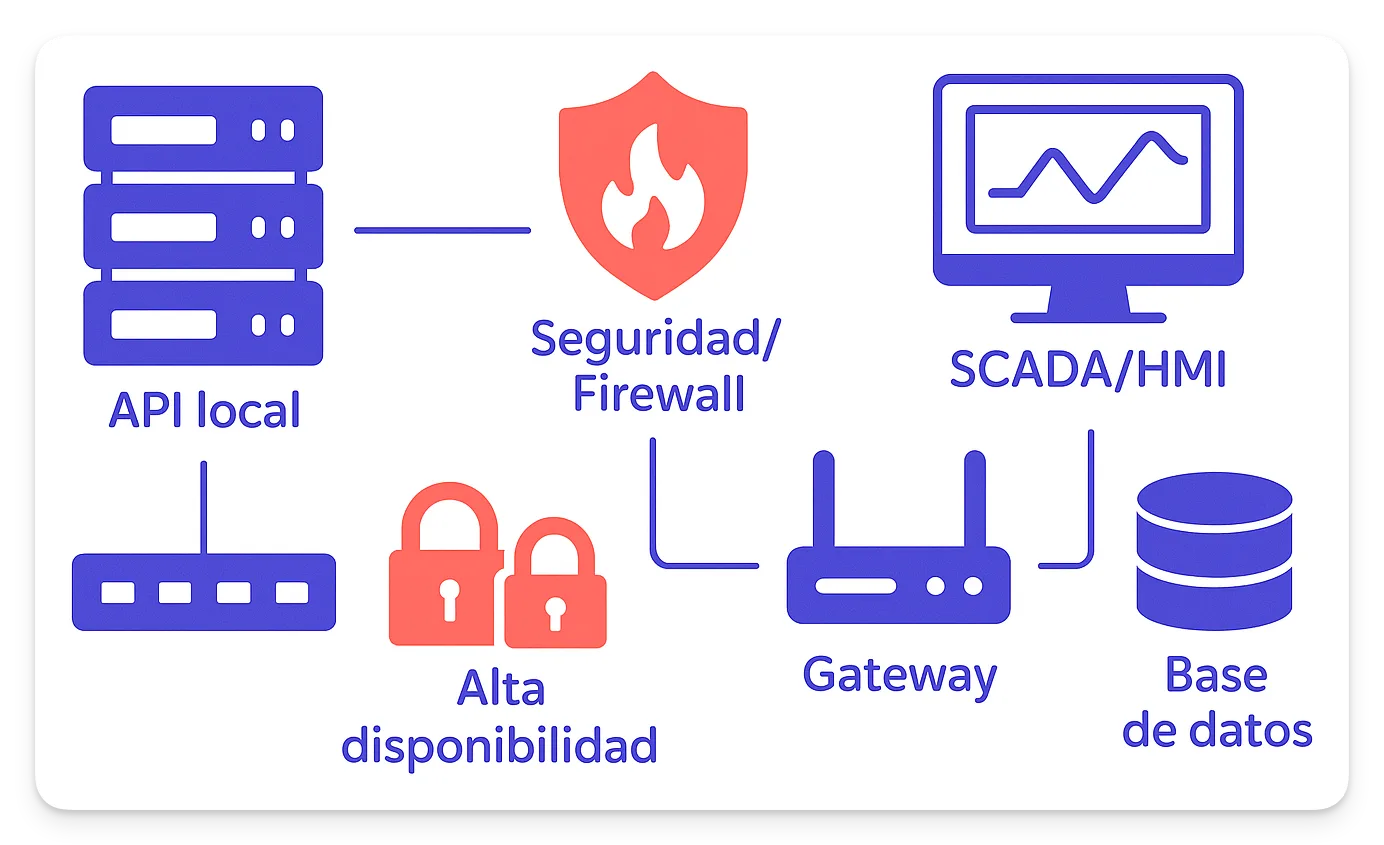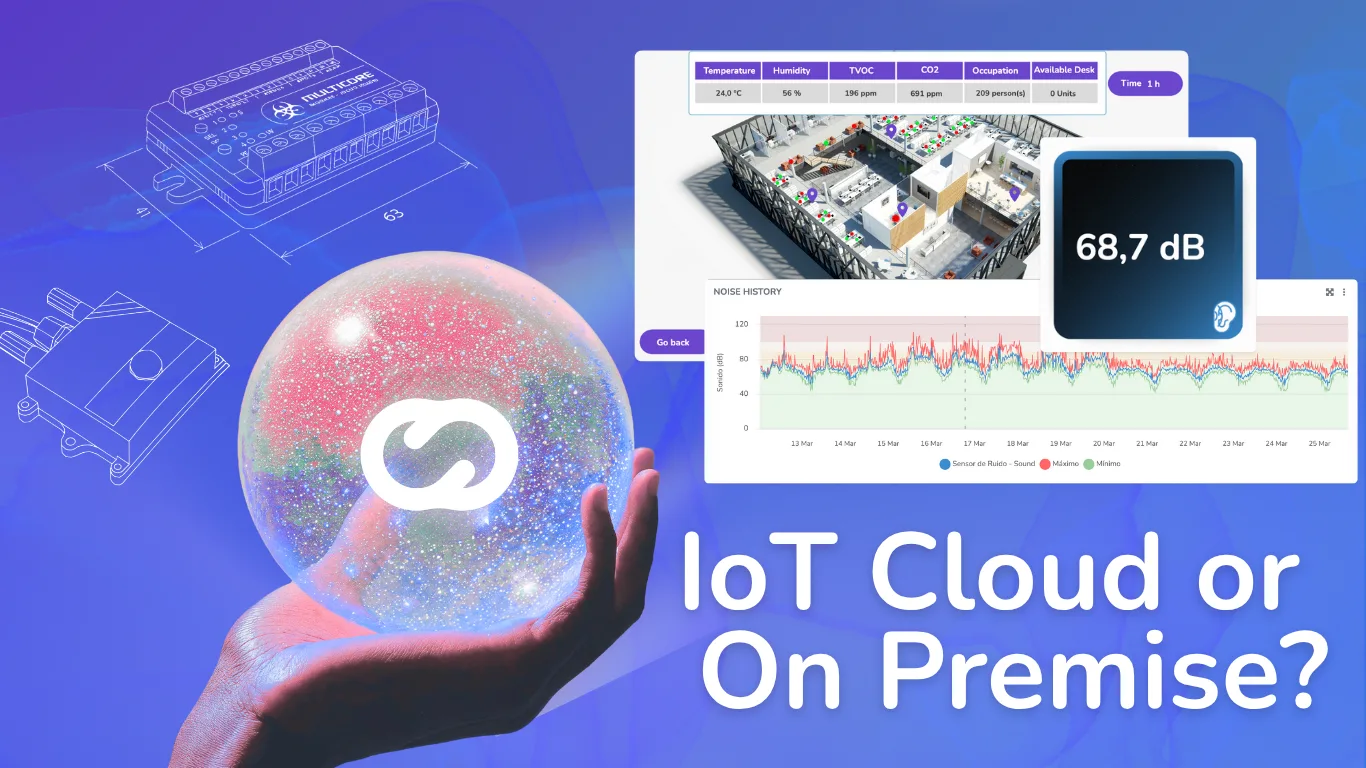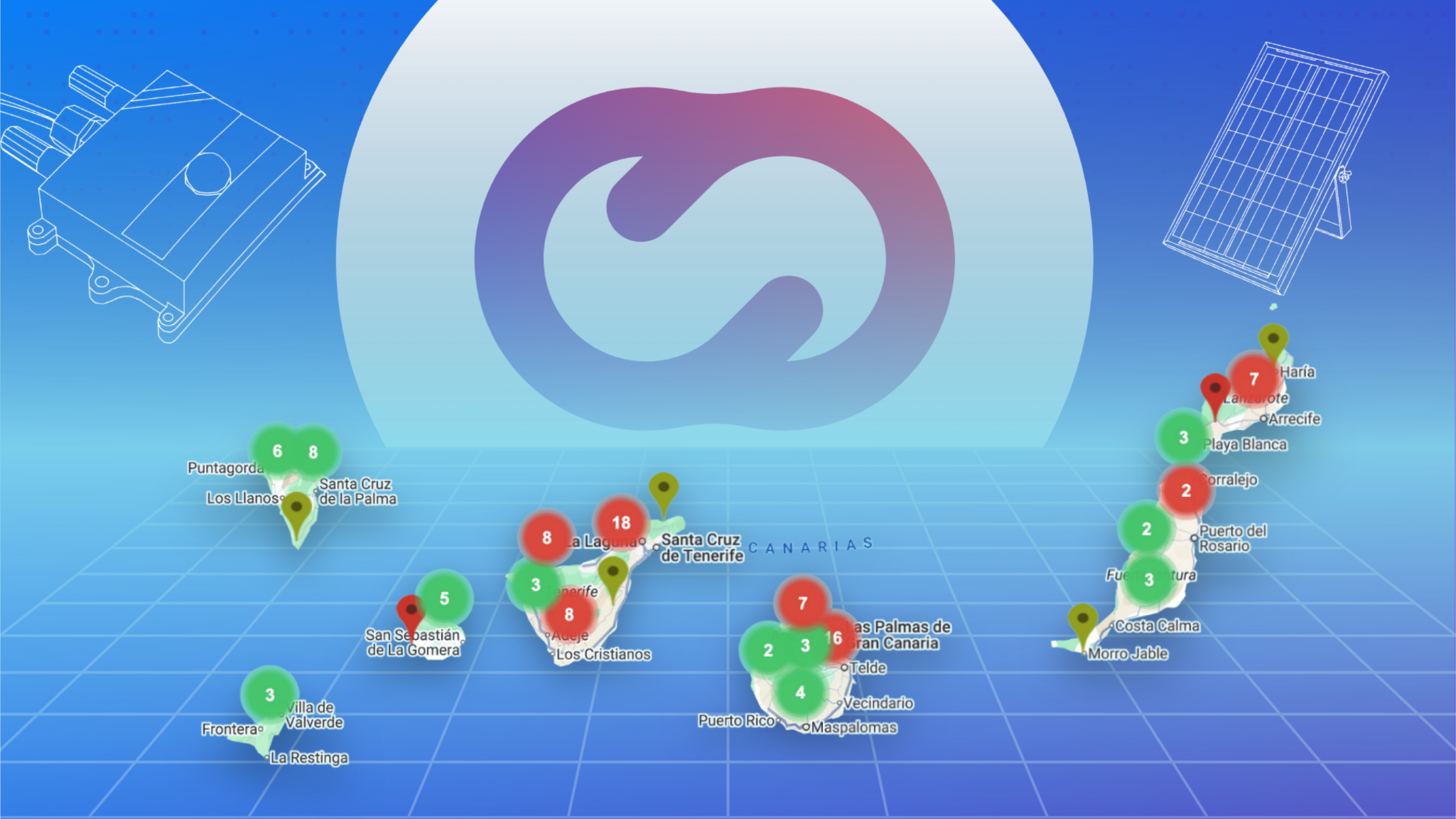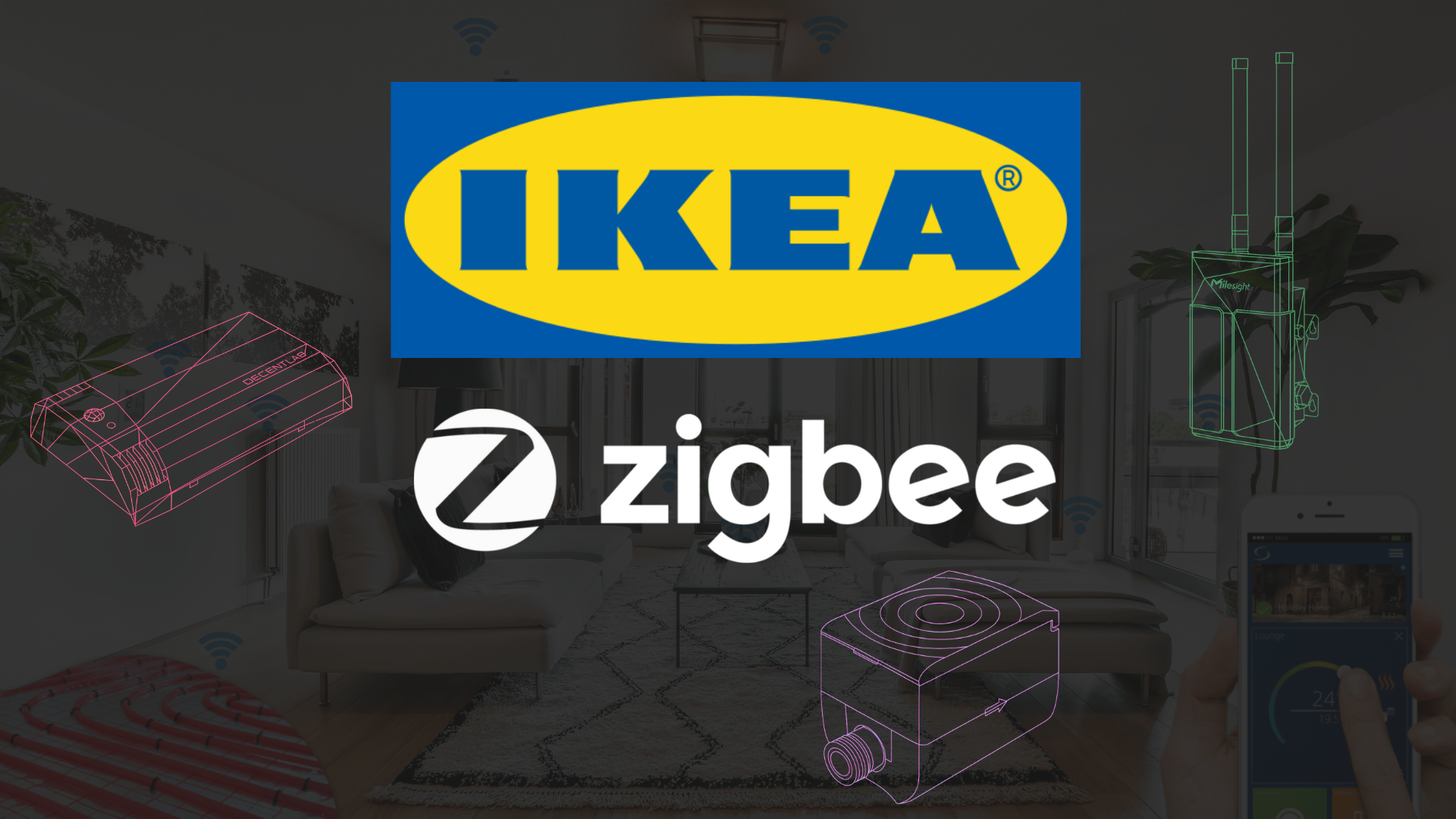At the core of every successful Internet of Things (IoT) project, there is a fundamental decision that defines its future: the choice of infrastructure model. The dilemma between an on-premise vs. cloud IoT platform is not a mere technical issue; it is a strategic choice that directly impacts the security, scalability, costs, and agility of the entire operation. With the industrial IoT market projected to reach $1.1 trillion by 2028, making the right decision from the beginning is crucial to align technology with long-term business objectives.
While the Cloud model offers unprecedented speed and flexibility, the On-Premise approach provides a level of control and security that remains irreplaceable for many industries. At Cloud Studio IoT, we have successfully implemented both architectures, understanding that there is no single answer. This definitive guide neutrally breaks down the advantages, disadvantages, and ideal scenarios for each model, allowing you to make an informed and strategic decision.
Understanding Cloud-Based IoT Platforms
A cloud-based IoT platform operates on a Software as a Service (SaaS) or Platform as a Service (PaaS) model, where the server and software infrastructure is managed by an external provider. Data from devices is transmitted via the internet to data centers managed by giants like AWS, Google Cloud, or Azure, on which specialized platforms like ours operate. This model focuses on agility and outsourcing infrastructure management.

The advantages of this approach are significant, especially for companies looking to move quickly. The main one is elastic scalability, which allows resources to be automatically adjusted according to demand. This is complemented by a cost model based on operating expenses (OpEx), which drastically reduces the initial investment (CapEx). Furthermore, an industrial IoT platform in the cloud benefits from automatic updates and an ecosystem of integrated services, such as artificial intelligence and machine learning tools, which accelerate innovation.
However, the cloud also presents challenges. The dependence on a stable internet connection is absolute, and latency can be a barrier for applications that require real-time responses. There is a shared security responsibility, and customization may be limited by the services offered by the provider. In the long term, subscription costs can accumulate, and data egress fees are an important consideration in the total cost of ownership (TCO).
The Power of Control: On-Premise IoT Platforms
An On-Premise IoT platform, or in-house, means that all the solution’s hardware and software are deployed within the organization’s private infrastructure. The company owns and manages the servers, databases, and network, maintaining total control over the entire ecosystem. This model prioritizes security, data sovereignty, and performance above all else.

The most notable advantage is total security and control. By operating within a defined and private network perimeter, the attack surface is drastically reduced. This is essential for industries that handle sensitive intellectual property or are subject to strict compliance regulations such as GDPR or HIPAA, as data sovereignty is guaranteed. Another critical advantage is low-latency performance. The physical proximity of processing to the devices allows for deterministic response times, an indispensable requirement for real-time industrial machinery control. Although the initial investment is high, the long-term TCO for stable workloads can be lower, turning the infrastructure into a depreciable asset rather than a perpetual rental.
The disadvantages are the other side of the control coin. The high initial investment in hardware and licenses (CapEx) can be a barrier. Scalability, although possible, must be planned and is more expensive. In addition, all responsibility for maintenance, updates, and security falls on the internal IT team, which requires considerable experience and dedicated resources. For organizations that need a customized solution with granular control, value-added services often include the design of these robust architectures.
Direct Comparison: Key Factors in the Decision
To better visualize the differences, the following table compares the two models across the most important criteria. There is no universal “winner”; the best option depends on the specific priorities of your business. The right choice often involves weighing the relative importance of each of these factors, from the pricing model to maintenance requirements.
| Criterion | Cloud IoT Platform | On-Premise IoT Platform |
|---|---|---|
| Cost Model | OpEx (Operating Expense): Recurring subscription payments. | CapEx (Capital Expense): High initial investment, predictable operating costs. |
| Scalability | Elastic and on-demand, ideal for unpredictable growth. | Planned and finite, efficient for predictable growth. |
| Security and Control | Shared responsibility with the provider. Software-level control. | Total responsibility and control over hardware, software, and data. |
| Maintenance | Largely managed by the cloud provider. | Complete responsibility of the internal IT team. |
| Performance and Latency | Variable, dependent on the internet connection. | Ultra-low and deterministic, ideal for real-time. |
| Data Sovereignty | Managed, dependent on the provider’s geographical regions. | Guaranteed and auditable, with data residing on the own infrastructure. |
Deepening in Security: A Decisive Factor
The choice between Cloud and On-Premise has profound security implications. While the On-Premise model offers absolute physical and network control, a misconfiguration can be disastrous. On the other hand, the cloud, although managed by experts, introduces a wider attack surface and a shared responsibility model that must be meticulously managed. A modern approach to IoT cybersecurity, based on the principles of Zero Trust (“never trust, always verify”), is fundamental in both scenarios. This implies strict micro-segmentation, continuous authentication, and the principle of least privilege for each device and user, regardless of whether the infrastructure is local or in the cloud.
When to Choose a Cloud Platform?
The cloud is the preferred option in scenarios where speed and flexibility are the highest priorities. It is the ideal choice for startups and SMEs with limited capital who cannot afford a large initial investment. It is also perfect for projects that require rapid prototyping and deployment, such as launching a Minimum Viable Product (MVP), where a low-code IoT platform can further accelerate the process. Applications with highly variable or seasonal demand, such as in retail or agriculture, benefit greatly from the cloud’s elastic scalability. Finally, companies that do not have a large specialized IT department find an ally in the cloud that allows them to focus on their core business.
When is an On-Premise Solution Better?
On-Premise becomes the strategic option when control and security are non-negotiable. It is the default architecture for critical infrastructures (energy, water) and heavy industry, where millisecond latency is vital for process control. Organizations in sectors such as defense, finance, or health, which are subject to strict regulations on data sovereignty, find in On-Premise the most direct and auditable way to comply with the law. It is also the only viable solution for operations in remote locations with limited or non-existent internet connectivity, such as in mining or extensive agriculture. Large companies with already established data centers and IT teams may also prefer this model to maximize control and optimize the TCO in massive and stable deployments, as seen in some large-scale success stories.

The Hybrid Approach: Combining the Best of Both Worlds
The “on-premise vs cloud iot platform” debate is often simplified to a binary choice, but the reality is more nuanced. There is a third way: the hybrid model. This advanced architecture does not see the two models as opposites, but as complementary components. A hybrid approach allows running critical workloads that require low latency and security in a local environment, while leveraging the power of the cloud for large-scale data analysis, long-term storage, and global business intelligence.
For example, a factory can process its production line’s quality control data on a local server for instant responses, but send daily production summaries to the cloud to compare them with data from other factories worldwide. This model offers superior flexibility and resilience, adapting to the specific needs of each workflow. It demonstrates a technological maturity that seeks to optimize each process in the most suitable environment, a philosophy that we apply at Cloud Studio IoT to design truly robust solutions.
Conclusion: Architecture at the Service of the Business
In short, there is no universal answer to the question of whether an On-Premise or Cloud IoT platform is better. The right decision is not based on trendy technology, but on an honest analysis of your business’s priorities, resources, and strategic requirements. The cloud offers formidable agility and innovation capacity, ideal for starting fast and scaling with flexibility. On-Premise, for its part, provides a bastion of control, security, and performance for the most critical and sensitive operations.
The key is to choose a technology partner who not only understands the differences, but has the ability and experience to implement the solution that your operation really needs. At Cloud Studio IoT, our experience ranges from agile cloud deployments to robust on-premise implementations for industrial and critical infrastructure clients. We believe that infrastructure should be an enabler, adapting to your business, and not the other way around, ensuring that your IoT project is built on a solid and future-proof foundation.



